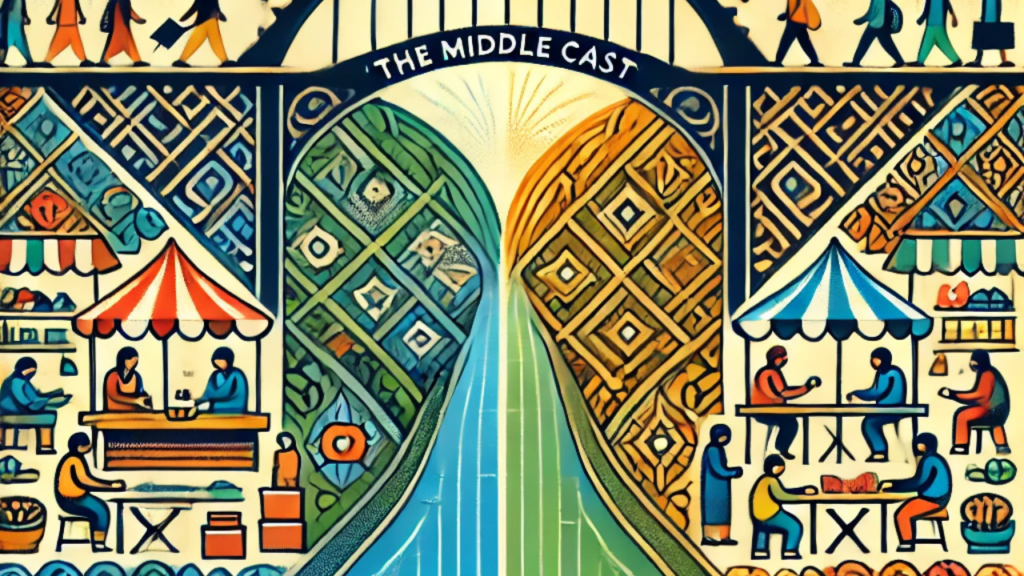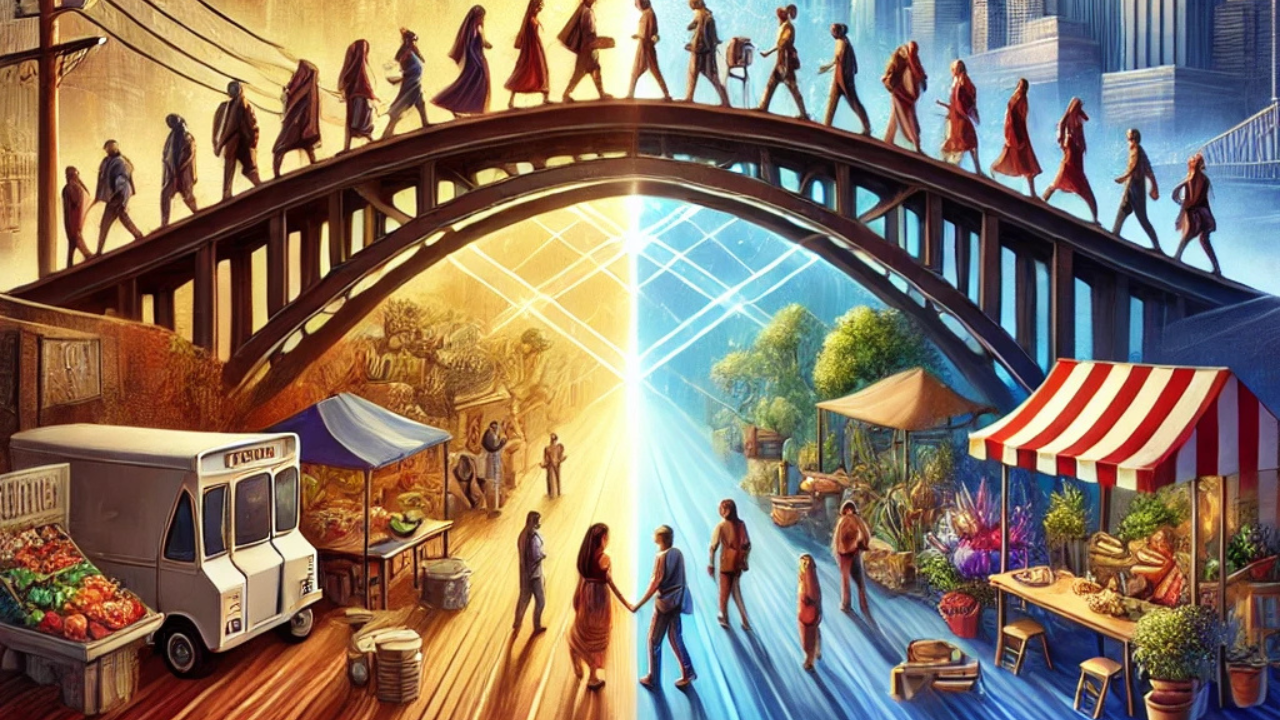Introduction
In a world marked by diverse social structures, the concept of “The Middle Cast” occupies a pivotal role. While often overlooked in favor of discussions centered on upper or lower societal strata, the middle cast is essential in maintaining balance and fostering connections. This segment represents the glue binding disparate social classes and acts as a dynamic force in cultural, economic, and political landscapes. Understanding the middle cast’s historical roots, modern-day relevance, and the challenges it faces is key to fostering a more equitable society. This article explores the evolution, significance, and empowerment strategies for the middle cast, emphasizing its role as a vital societal bridge.
Historical Context and Evolution
The origins of the middle cast can be traced to ancient civilizations, where social hierarchies were rigidly defined. In feudal systems, this group often comprised merchants, artisans, and other skilled workers who served as the backbone of economic activity. While the upper cast wielded power and the lower cast performed labor-intensive tasks, the middle cast ensured the system’s functionality through trade and innovation.
Over time, the definition of the middle cast evolved, shaped by economic revolutions, industrialization, and cultural shifts. During the Industrial Revolution, for instance, the burgeoning middle class in Europe and America became a driving force for societal change, championing values like education, entrepreneurship, and political participation. Today, the middle cast encompasses a broader range of individuals, reflecting a mix of professions, educational backgrounds, and cultural identities. This evolution underscores the group’s adaptability and enduring relevance.
Sociological and Economic Significance

The middle cast holds immense sociological and economic importance, acting as a stabilizing force within societies. Sociologically, this group bridges the gap between extremes, fostering communication and understanding among diverse social classes. Their unique position allows them to mediate conflicts, advocate for policies that benefit broader populations, and promote social mobility.
Economically, the middle cast is a cornerstone of growth. This group constitutes a significant portion of consumers, driving demand for goods and services. Their entrepreneurial spirit contributes to innovation, while their labor supports various industries. In developing economies, the rise of a robust middle cast often signals progress, as it correlates with increased literacy, better healthcare, and improved living standards.
However, the middle cast also faces significant challenges, such as economic insecurity and lack of representation in policymaking. These issues threaten their ability to function effectively, highlighting the need for targeted interventions to ensure their continued contribution to societal well-being.
The Middle Cast in Modern Society
In today’s interconnected world, globalization and technology have redefined the middle cast. This group is no longer confined to traditional definitions or geographical boundaries. Instead, the middle cast now includes professionals in emerging industries, freelancers, and even digital influencers. This diversification reflects the dynamic nature of modern economies and cultures.
Politically, the middle cast plays a crucial role in shaping governance. They often represent the majority of voters, influencing electoral outcomes and driving public discourse. Despite this, their voices are frequently overshadowed by more affluent or marginalized groups. Media representation of the middle cast further complicates matters, as it often perpetuates stereotypes or fails to capture their diverse realities.
Case studies from countries like India, where the middle cast has been instrumental in pushing for social reforms, and Brazil, where economic policies targeting this group have spurred development, illustrate the transformative potential of an empowered middle cast. These examples underscore the group’s ability to drive meaningful change when given the right opportunities.
Cultural Perspectives and Stereotypes
Cultural perceptions of the middle cast vary widely, often influenced by stereotypes that obscure their true contributions. In many societies, the middle cast is stereotyped as either overly ambitious or stuck in mediocrity. These portrayals, frequently reinforced by literature, cinema, and media, fail to acknowledge the group’s resilience and innovation.
For instance, films and novels often depict the middle cast as struggling to achieve upward mobility, ignoring their successes and influence. However, real-world examples challenge these narratives, showcasing individuals and communities within the middle cast who have excelled in fields like education, technology, and the arts.
Breaking these stereotypes requires a concerted effort to highlight diverse middle-cast experiences. By celebrating their achievements and addressing misconceptions, society can foster a more accurate and inclusive understanding of this group’s role.
Strategies for Empowerment and Inclusion
Empowering the middle cast requires multifaceted strategies that address their unique challenges. Education is a key driver of empowerment, providing individuals with the skills and knowledge needed to thrive in a rapidly changing world. Governments and organizations must invest in accessible, high-quality education tailored to the needs of middle-cast communities.
Economic policies should also prioritize this group, offering incentives for entrepreneurship and ensuring job security. For instance, tax benefits for small businesses and affordable housing initiatives can alleviate economic pressures. Social programs that promote cultural inclusivity and combat discrimination are equally important, fostering a sense of belonging and recognition.
Collaboration between middle-cast individuals and other social groups can further enhance their impact. By building alliances and advocating for shared goals, the middle cast can strengthen their voice and influence in societal decision-making.
Conclusion
The middle cast is an indispensable component of societal frameworks, bridging divides and driving progress. From its historical roots to its modern-day significance, this group has consistently demonstrated resilience and adaptability. However, addressing the challenges they face is crucial to unlocking their full potential. By investing in education, economic opportunities, and cultural inclusion, society can empower the middle cast to continue shaping a more equitable and prosperous future.
FAQs
What is meant by “The Middle Cast”?
The middle cast refers to a social group that bridges the gap between upper and lower societal strata, often encompassing professionals, skilled workers, and entrepreneurs.
How does the middle cast differ across cultures?
Cultural variations influence how the middle cast is defined and perceived, reflecting diverse economic and social structures.
What challenges does the middle cast face in modern society?
Key challenges include economic insecurity, lack of representation, and cultural stereotypes that obscure their contributions.
Why is the middle cast important for societal balance?
The middle cast fosters communication, drives economic growth, and advocates for policies benefiting broader populations.
How can the middle cast be better represented in media and politics?
Improving representation requires challenging stereotypes, highlighting diverse experiences, and amplifying middle-cast voices in public discourse.
Are there successful examples of middle-cast empowerment?
Examples include India’s social reforms driven by the middle cast and Brazil’s economic policies targeting this group to spur development.
How can individuals contribute to the empowerment of the middle cast?
Individuals can support educational initiatives, advocate for inclusive policies, and challenge stereotypes through awareness and dialogue.
You May Also Read: https://buznews.org/happy-thanksgiving/




